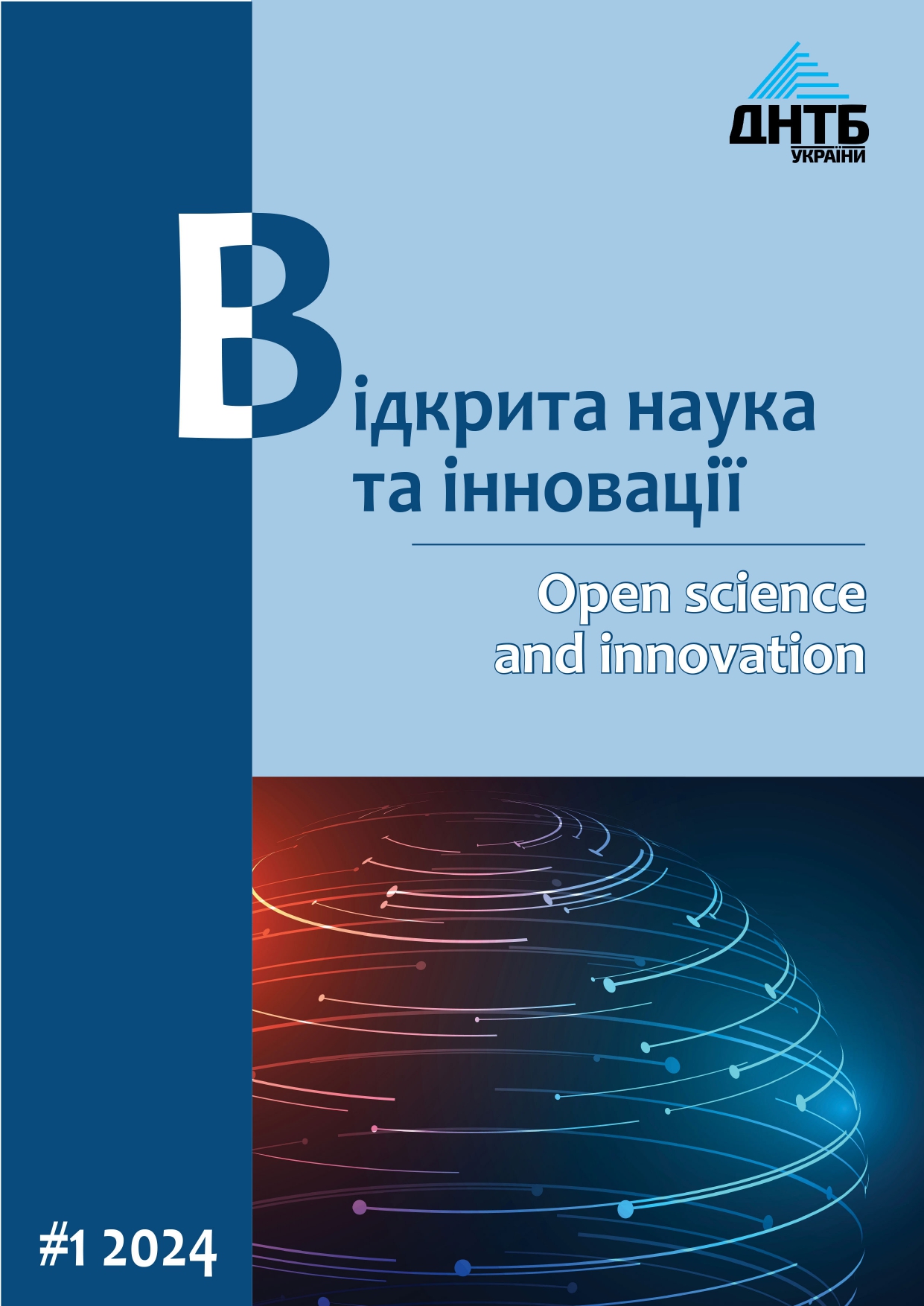METHOD OF INTEGRATED ASSESSMENT OF THE LEVEL OF INNOVATION ACTIVITY OF THE ECONOMY
DOI:
https://doi.org/10.62405/osi.2024.01.05Keywords:
інновації; інтегральна оцінка, активність, економіка, індикатор, індекс.Abstract
Based on the conducted research and analytical generalizations of existing methodological approaches to assessing the innovation activity of the economy, the absence and the necessity of modern developments that allow to comprehensively assess the level of innovation activity using relevant criteria and indicator systems in accordance with modern conditions of economic development have been identified and proven. Based on this, the methodological basis for assessing the level of innovation activity of the economy is substantiated, which consists of several stages, namely: characterization of factors that have positive and negative impacts on innovation; determination of the integral index; ranking of objects and zoning of the territory according to the level of innovation activity of the economy. The following criteria for the innovation activity of the economy have been identified: innovation infrastructure; human capital; innovation market. Taking into account the existing problems and prospects of innovation development, a list of indicators for criteria and components of innovation activity has been determined. The methodology involves eliminating the differences in dimensions of the parameters by converting them into dimensionless form, which allows calculating the integral index of innovation activity of the economy as the sum of normalized values of the mentioned indicators taking into account the corresponding weighting coefficients.
Based on the results of calculating the integral index of innovation activity of the economy, it is possible to assess the object according to the level of innovation activity according to the proposed classification. In general, the implementation of the proposed methodology for the integrated assessment of the level of innovation activity of the economy makes it possible to
identify the features and trends of innovation activity at various levels of management and governance in order to eliminate contradictions in the form of deviations between the actual and target states of a particular component of the innovation ecosystem or the process of innovation development in the economy.
References
Vasylieva, T.A. and Kasyanenko, V.O. (2013), “Integral assessment of innovation potential of Ukraine’s national economy: a scientific methodical approach and practical calculations”, Aktual’ni problemy ekonomiky, vol. 6, no. 144, pp. 50–59.
Voloschuk, R.V. (2013), “Comparative analysis of approaches to determining the weighting coefficients of integral indices of the state of complex systems”, Induktyvne modeliuvannia skladnykh system, no. 5, рр. 151–165.
Hrabovets’kyj, B.Ye. (2000), Osnovy ekonomichnoho prohnozuvannia: navchal’nyj posibnyk [Basics of economic forecasting: a study guide], VF TANH, Vinnitsa, Ukraine.
Lihonenko, L.O. (2015), “Methodology and tools for evaluating enterprise innovativeness”, Marketynh i menedzhment innovatsij, vol. 3, рр. 105–117.
Ministry of Economic Development and Trade of Ukraine (2013), “Order of the Ministry of Economic Development and Trade of Ukraine «On the approval of Methodological recommendations for calculating the level of economic security of Ukraine»”, available at: http://www.me.gov.ua/ (accessed: 10.11.2023).
Shkuratov O.I. Informatsiyno-analitychnyy faktor ekolohichnoyi bezpeky v ahrarnomu sektori sektory ekonomiky // Ekonomichnyy analiz: zb. 2016. Vyp. 23. № 1. S. 98–105.
Shkuratov, O.I. (2023), “The role of innovative infrastructure in the technological development of the economy. Innovative economy: perspectives and technologies”: Materialy I Mizhnarodnoi naukovopraktychnoi konferentsii [Materials of the 1st International Scientific and Practical Conference] Mіzhnarodna naukovo-praktychnа konferentsіya [International Scientific and Practical conference], National Aviation University, Kyiv, Ukraine, рр. 44–46.
Atkinson R, Foote C (2021), The 2020 State New Economy Index.
Dutta, S. and Lanvin, B. (2013), The Global Innovation Index 2013: The Local Dynamics of Innovation. Cornell University, INSEAD, and WIPO (World Intellectual Property Organization), Geneva, Ithaca.
Erdin, C. and Çağlar, M. (2022), “National innovation efficiency: A DEA-based measurement of OECD countries”, International Journal of Innovation Science, vol. 15 (3), pp. 427–556.
European Innovation Scoreboard 2021, (2021), Luxembourg, European Union. 12. Jankowska, B. Matysek-Jȩdrych, A. and Mroczek-Dabrowska, K. (2017), “Efficiency of national innovation systems – Poland and Bulgaria in the context of the global innovation index”. Comparative Economic Research, vol. 20 (3), pp. 77–94.
Shkuratov, O. (2018), “Methodology for estimation of ecological safety in the agricultural of Ukraine”, Scientific Papers: Series Management, Economic Engineering in Agriculture and Rural Development, vol. 18, no. 3, рр. 379–386.
Sidhu, I. Goubet, J-E. Webber, H. Fredh-Ojala, A. at al. (2016), “Berkeley innovation index: an approach for measuring and diagnosing individuals’ and organizations’ innovation capabilities”, Concept paper, February 2016. Conference: 2016 International Conference on Engineering, Technology and Innovation /IEEE lnternational Technology Management Conference DOI: 10.1109/ICE/ITMC39735.2016.9025867


